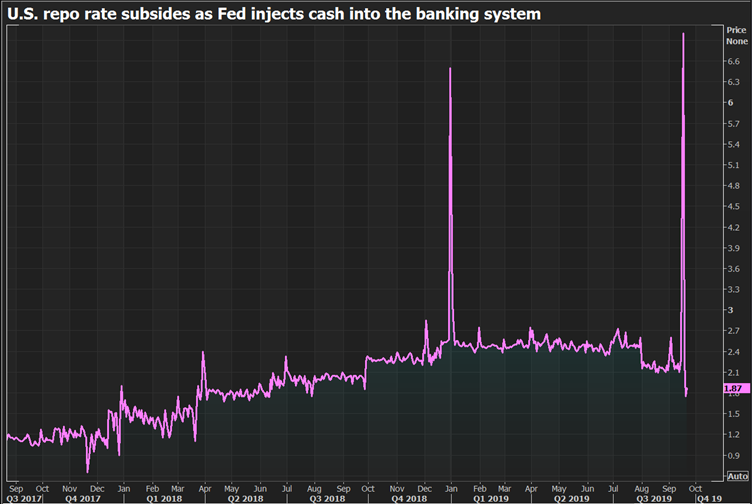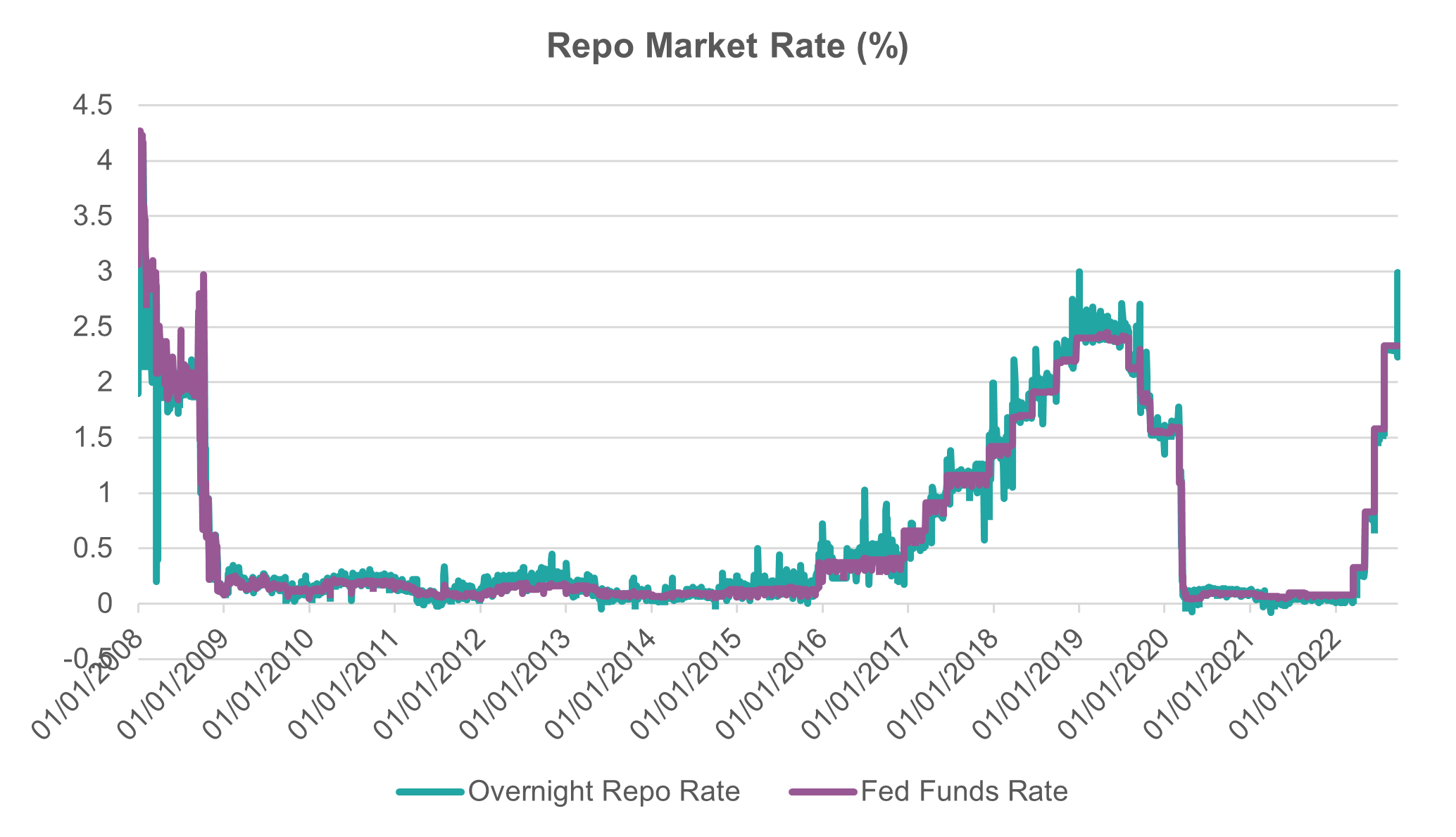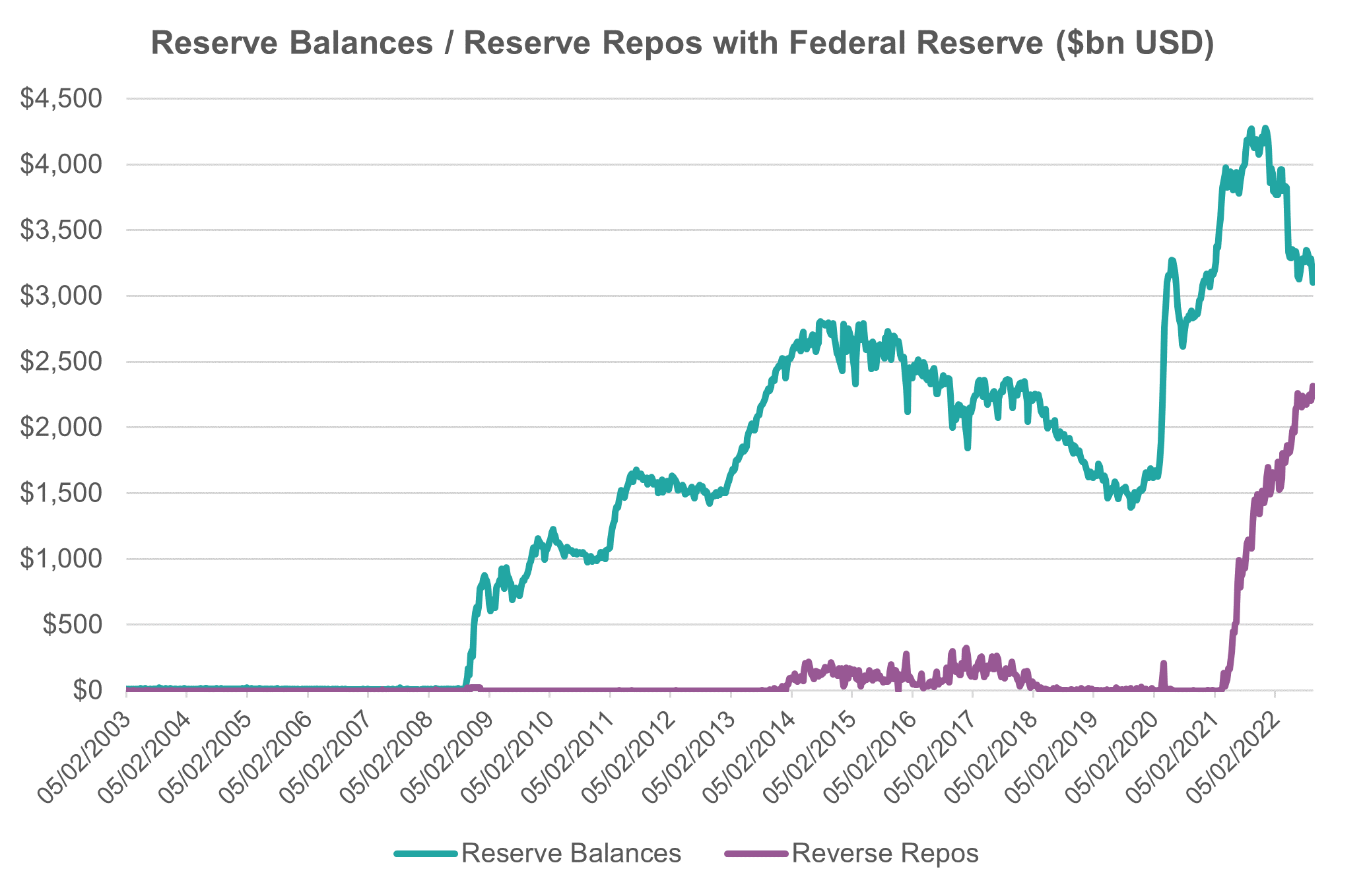Will the repo market break (your portfolio)?
Three years ago, an unassuming corner of the market was experiencing a multi-trillion-dollar crisis, now known as the 2019 Repo Market Crisis.
The plumbing of our financial system was breaking, a key foundation to the smooth operation of nearly all financial intermediaries from commercial banks to managed funds, was compromised. An overnight rate which had been tracking between 1.5 – 2.5% tripled in the space of a day (see below).

The story ends with the Federal Reserve riding to the rescue – but rather than rehash the story of the 2019 Repo Market Crisis, today let’s consider the current dynamic of this market, and if it could break again, and if that will have an impact on your portfolio.
The Repo Market
The repo market is one of the more nuanced corners of the financial system, but essentially it allows market actors to provide collateralized loans to each other, using bonds as security to borrow short-term funds.
Bank A sells their US Treasury Bond (UST) to Pension Fund B, with the agreement that A will purchase that UST back at a later date for a slightly higher price. For A, this is called a “repo”, or re-purchase agreement – for B it’s called a “reverse repo”.
This provides liquidity to the market, where Bank A might need to top up its cash reserves for regulatory reasons, whilst Pension Fund B might want to extract a higher yield on its passive bond holdings.
Reverse repo means institutions who are not banks, such as mutual funds and pension funds, can now access the massive Fed balance sheet where they would normally not be able to. Since they can only put their cash at commercial banks (not the Fed), they enter into the repo market as cash lenders – see “reverse repo” – where they can get a way to lend cash in a secured environment.
The mechanics are a little complex at times, and this is by no means an extensive description, but what is worth stressing is the size of this market.
It is estimated that $3 – 4 trillion USD of repo transactions are conducted every single day.
On these transactions, there is a prevailing overnight interest rate charged, represented in the premium that Party A needs to buy back their security at. Generally, this is closely linked to the cash rate set by the Federal Reserve (or equivalent central bank for repo markets in other countries).

Consequences of the Repo Market
We just mentioned that non-bank institutions like to participate in this market to get their money working outside of a simple commercial bank deposit.
Importantly, mutual funds and pension funds are funded by individuals, who otherwise might have held their cash in a bank account. Because these institutions are funded by consumers taking money out of their bank account and depositing into a fund, the growth of their use of the reverse repo facility drains liquidity from the banking system.
As bank reserves deplete, banks have less appetite to engage in the repo market. This means there are fewer cash borrowers and therefore less activity.
Less activity in the repo market is like backing up the plumbing of the financial system: the repo rate increases to incentivise activity, which also pushes up the Fed funds rate (which would magnify any existing hiking activity), which means firms can’t finance short term operations or make further loans, which increases borrowing costs to consumers - you get the idea.
Let’s take one step back and consider that Fed funds rate issue. The Federal Reserve also participates in the repo market, and uses it as one of the levers to conduct monetary policy. During quantitative easing (QE), the Fed was active in the market as a buyer of Treasuries (repo), which added huge amounts of liquidity into the system. Now that the Fed has ramped up quantitative tightening (QT), the Fed is now selling Treasuries and removing liquidity from the system.
Why is that particular point important?
Because as the Fed is shrinking its balance sheet, there is still a ballooning volume of reverse repo transactions on the other side.

The green line shows the reserve balances held by commercial banks at the Federal Reserve – still at a healthy $3 trillion USD. But the volume of RRP is increasing, all the while the Fed is actively removing liquidity from the system. Those RRP transactions are likely to keep growing in line with increasing interest rates, given consumers would prefer to switch into money market funds which raise their yield higher than a term deposit might – even less liquidity!
We don’t know the exact point at which bank reserves become insufficient, however like in Ghostbusters, those two streams should probably never cross.
Will it break (your portfolio)?
The good news is that there are many more safeguards in place since the 2019 crisis, and a much greater awareness of how financial system plumbing should be protected to avoid aberrant behaviour throughout many different asset classes.
However, the unfortunate reality is that last time the repo market broke we had the Fed ready to save us as always. This time, the Fed is busy battling the raging fire of inflation, so asking them to add liquidity back to the repo market would be like asking that same fireman to quickly spray some petrol around amidst their efforts to extinguish the flame.
This kind of potential structural risk is why we have diversity in our portfolios, and not simply in our risk assets like equities – investors should be robust in their risk management of fixed income holdings, and where necessary employ an adviser or investment manager who considers duration and geographical risk extremely carefully in this environment.
In an ironic twist of fate, if the repo market breaks, defensive assets won’t be able to defend themselves for long.
4 topics

